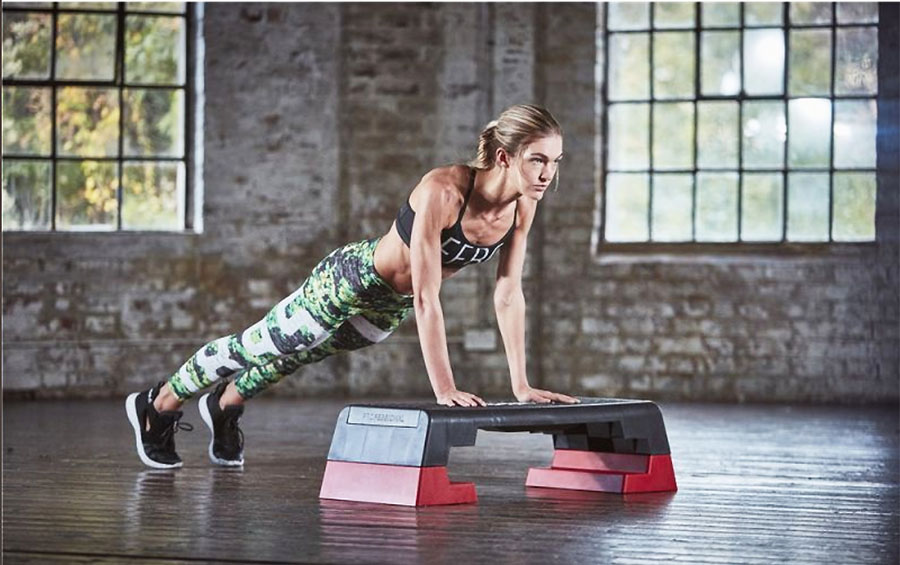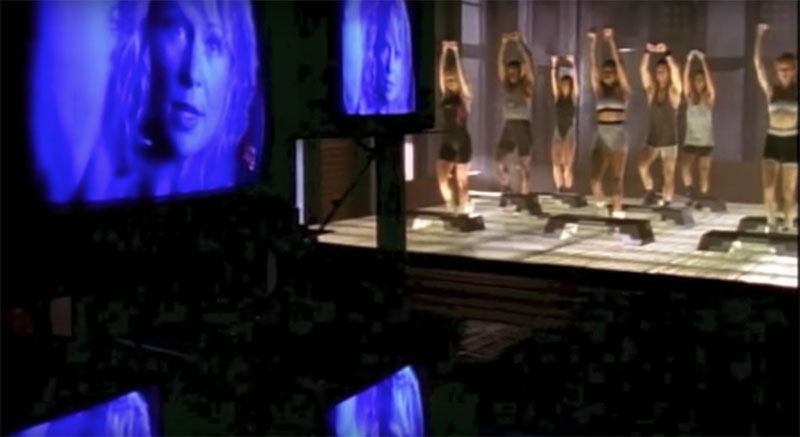 By Teresa Hartford
By Teresa Hartford
<span style="color: #999999;">Jane Fonda single-handedly elevated aerobics to national attention for women with leg warmers and high-cut unitards. One detail was missing, everyone was barefoot.
At the time, Angel Martinez, pictured right, was working as a sales rep on the West Coast for Reebok. Listening to the complaints from women about leg and foot pain after taking aerobics class, he understood. As an avid runner, he was used to dealing with foot pain from ill-fitting shoes.
He pitched the aerobic shoe concept to Paul Fireman, Chairman, Reebok at the time. He rejected it, but Angel was not daunted. He took his idea to another Reebok exec who ordered a prototype which he took around to fitness instructors in his territory. The shoe was a hit.
In 1982 the Reebok Freestyle fitness shoe dropped at retail. The shoe did not look like anything on the market. It came in white and several pastel colors. The upper was made of garment leather and it was a high-top with three puffy ankle supports and two thin Velcro straps to keep them in place.
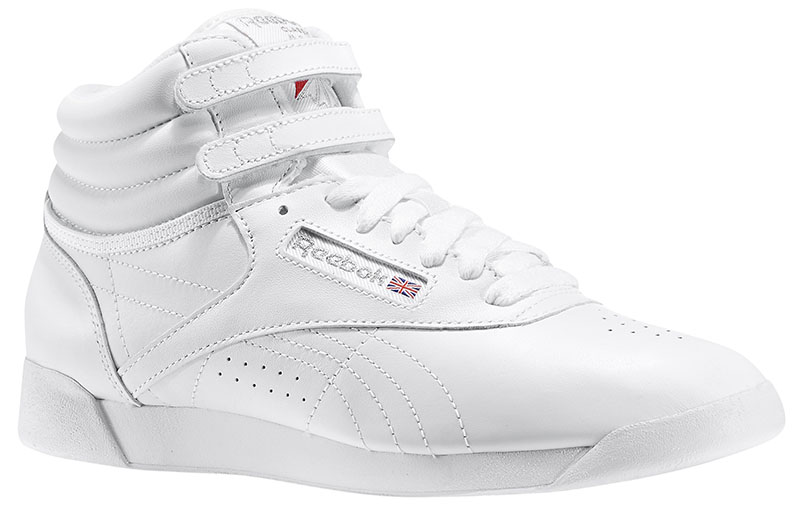
Initially, sales were quiet but Angel came up with a promotion that offered two weeks at a Richard Simmons fitness classes with every purchase. In a matter of days, 32,000 pairs sold out.
About that time, Gin Miller approached Angel, then Director of Business Development for Reebok, with an idea she had created called the STEP—a simple and inexpensive tool for getting your heart rate up and breaking a sweat.
→ Read SGB’s interview with Gin here.
The box had different heights that would suit any workout and you could adjust the height of the STEP by changing the position of the risers. It allowed for fewer pieces to worry about, required limited space to set up and store, and was suited to men and women. Angel knew he had a winner that would change the aerobic fitness industry.
<span style="color: #999999;">In the early 80s, STEP Reebok was introduced to health clubs here and around the world. The timeless STEP system remains an integral and popular piece of equipment to this day for group fitness classes and home gyms. The non-slip rubber surface, adjustable to three different heights, is sturdy for every jump and lunge. Watch the STEP Reebok video here or click on the still shot below and watch Gin teach STEP.
<span style="color: #999999;">Angel shared his memories with SGB when he met Gin, the STEP’s rise to fame and the historical significance the STEP Reebok system had in the history of women’s fitness.
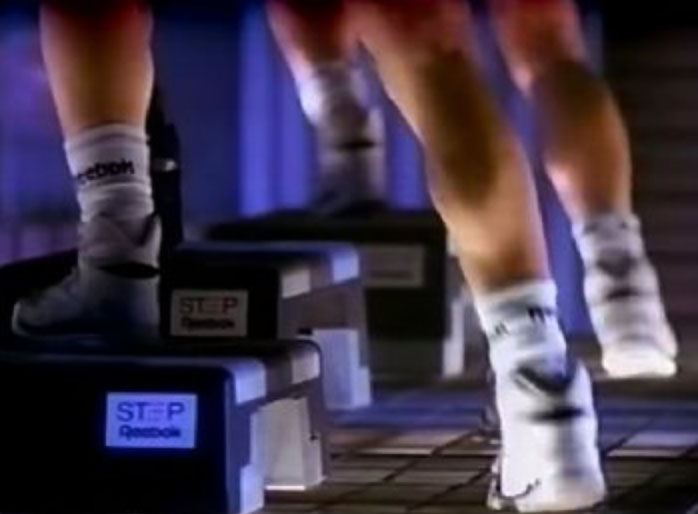 Why was the STEP a compelling product to Reebok? We were looking for fitness programming that studios could use to extend what was going on in the aerobics movement, which was booming but incorporated a lot of dance moves. And the intensity of the dance movement in most classes was a turn off for men. They made up less than five percent of the class participation. What was also becoming obvious to us was that certified, professional instructors were constantly looking for new programming.
Why was the STEP a compelling product to Reebok? We were looking for fitness programming that studios could use to extend what was going on in the aerobics movement, which was booming but incorporated a lot of dance moves. And the intensity of the dance movement in most classes was a turn off for men. They made up less than five percent of the class participation. What was also becoming obvious to us was that certified, professional instructors were constantly looking for new programming.
With the STEP you could diversify the fitness studio. And what Gin did with it was phenomenal. She choreographed a very intense workout on the STEP that appealed to both men and women. It was more athletic training. The STEP gave instructors a break from the intensity of the dance-centric classes they were teaching and more cardiovascular intense than a lot of what was being taught in the classes and aerobic classes in general.
The STEP was limitless. You could challenge anybody physically with it. There were people who would poo-poo it and say it wasn’t a big deal. Oh yeah? Do an hour workout, and see if you still feel the same way.
The STEP had everything but mostly it had Gin. She had this irrepressible energy and creativity and enthusiasm. She was the star of the whole thing. How could you not follow what she was doing? She is one of those people that doesn’t come along that often.
Gin showed up with a prototype, and we felt like we had enough to work with, with the prototype as it was. The shortcomings of the original step were minimal. The evolution of it depended on the programming. The non-slip tread became hugely important as the programming became more intense. The original step had two height adjustments, and we thought a third would be more challenging.
The STEP was the perfect at-home workout tool. Where you could improve your CV, your leg strength and your balance. And it was also a great piece of equipment because you had three different step heights that would suit any workout and you simply adjusted the step height to the height that you wanted, and it was non-slip so you had traction during your workouts.
Why did the STEP take off so rapidly in the fitness studios? In those days Reebok had a relationship with virtually every health club in America because of our aerobic program. The instructors were all wearing Reebok.
When we came to them with the STEP, it solved a huge problem. It created a whole new genre of classes and minimized downtime in the studio. Therefore, you could generate more revenue, you could have more programming to attract more participants and, in the end, it was a great design because you could stack the STEP and it would be out of the way. A studio’s floor space was still available to do anything else unlike a room full of spinning bikes.
The STEP was the first piece of equipment of its kind that worked in a studio environment, and the evolution of it revolved around the programming and the utilization. There were changes that we could have made to the STEP but after a while, the studios and health clubs said ‘no, just leave it the way it is. It works perfectly, we love the fact that it is so modular.’
We focused on creating a whole variety of videos—in those days you used that as the programming delivery—and then training people through Gin and the latest iterations of the STEP program.
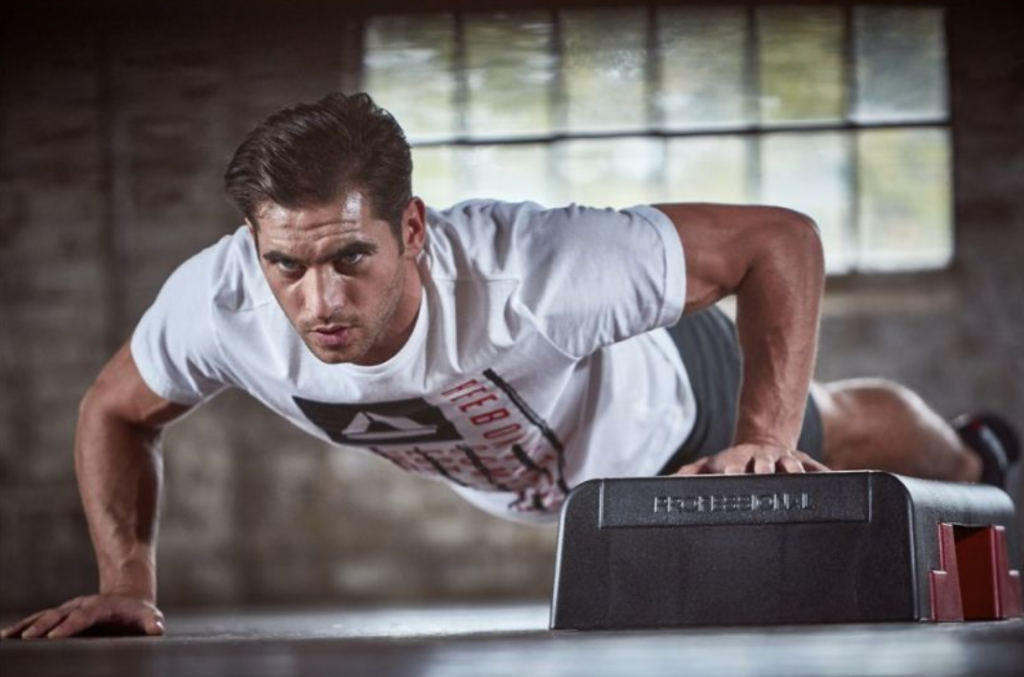 Was there any equipment that followed the STEP that was as successful? In the early 90s, Reebok introduced a Core Board which was a good piece of equipment. A board you stood on, that was unstable and you could rotate while standing on it. That was quite good for core training. It was successful but not as successful as STEP. Part of it was the studios. Once they had the STEP and the Core Board and that level of programming, to buy another piece of equipment was problematic and not as practical as the STEP program.
Was there any equipment that followed the STEP that was as successful? In the early 90s, Reebok introduced a Core Board which was a good piece of equipment. A board you stood on, that was unstable and you could rotate while standing on it. That was quite good for core training. It was successful but not as successful as STEP. Part of it was the studios. Once they had the STEP and the Core Board and that level of programming, to buy another piece of equipment was problematic and not as practical as the STEP program.
People have tried bands and balls, etc. STEP Reebok was the first accessory piece of equipment of its kind. Since then, fitness has diversified significantly. The one piece of equipment that caught on was spinning but, again, that’s very different and very specialized than what generally speaking people were doing with a STEP program.
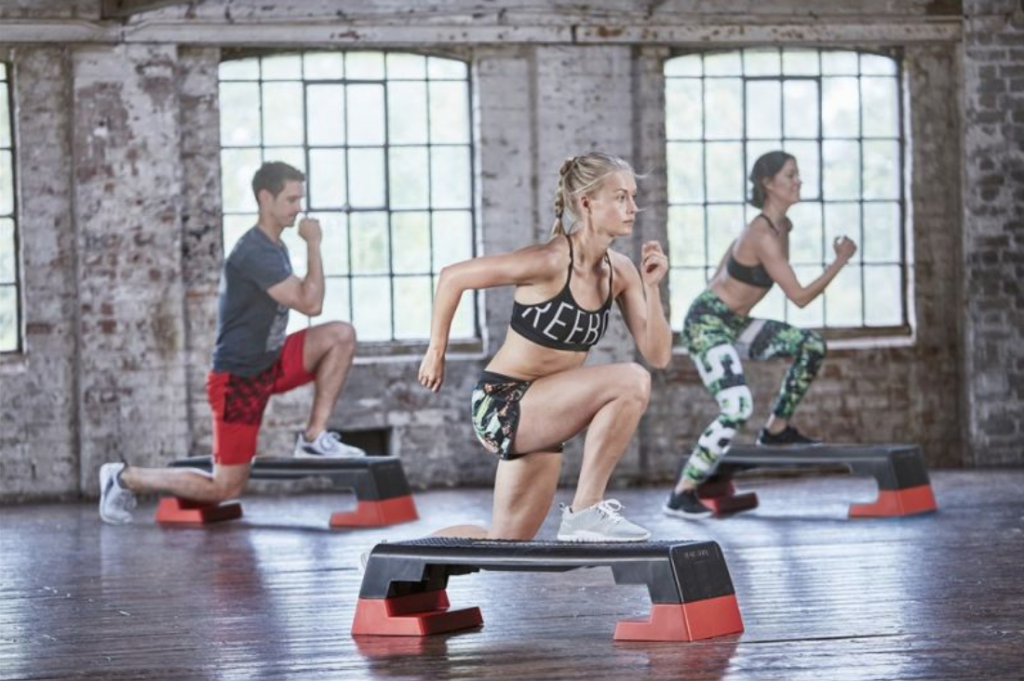 At the time Reebok introduced the STEP, you also came out with a hightop sneaker that offered ankle support and stability while stepping. Would the STEP have been as successful if Reebok had not created the first aerobic shoe? No. I don’t think so. What you’re introducing when you get up on a STEP is instability. The whole idea that you could misstep and twist your ankle was real. Without the hightop shoe, it wouldn’t have been possible.
At the time Reebok introduced the STEP, you also came out with a hightop sneaker that offered ankle support and stability while stepping. Would the STEP have been as successful if Reebok had not created the first aerobic shoe? No. I don’t think so. What you’re introducing when you get up on a STEP is instability. The whole idea that you could misstep and twist your ankle was real. Without the hightop shoe, it wouldn’t have been possible.
We were doing a total approach to fitness and trying to remove the barriers that people had to access fitness. A lot of people would say ‘I want to get in shape. I don’t know what to do. I don’t like running. I don’t know where to go.’ What we were trying to do was make fitness accessible, make fitness fun, creative, social, and therefore you didn’t have an excuse not to do it. The hightop shoe, in combination with the STEP, 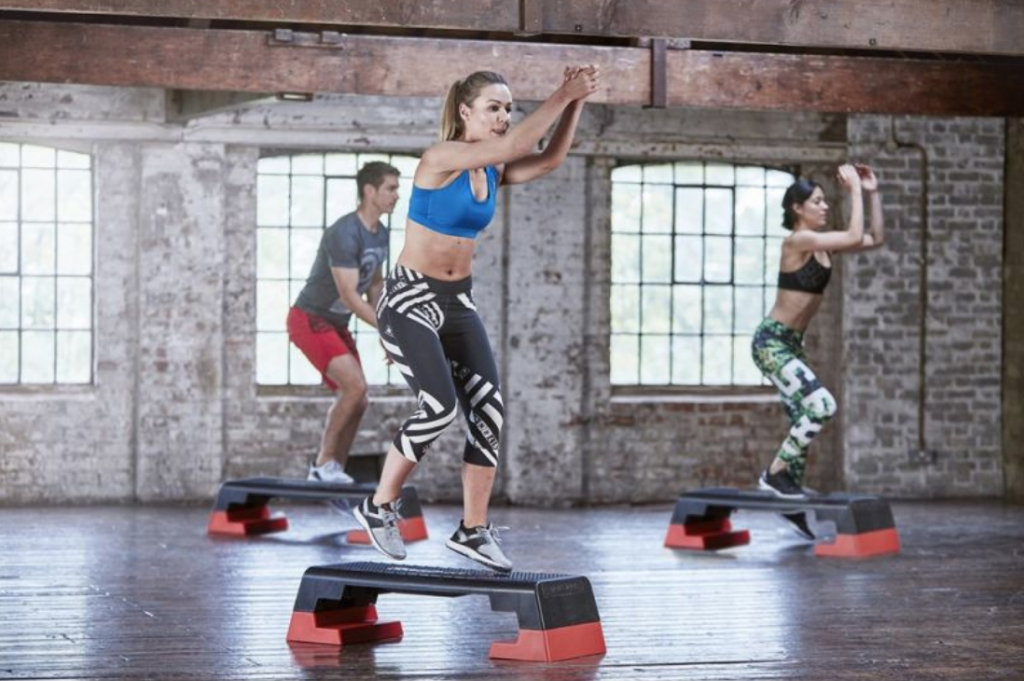 encouraged people, particularly women, to get into fitness.
encouraged people, particularly women, to get into fitness.
Reebok introduced the aerobic shoe in 1981. Yes, and at that time it was not considered feminine to sweat in public. Women were not supposed to have muscles. If you were cut in any way, people would say you were butch.
Before 1981 very few people, including women, wore sneakers. If you had a pair, it was the canvas Converse high or low top. White if you were female. Black if you were male. The options were very limited and there certainly were no unisex health clubs.
How did you get into the shoe business? I ran track in the early 70s in a pair of shoes that had plastic soles. Those were my first running shoes and from there I went to a canvas running shoe with a very little bit of rubber on the bottom. I was hurt most of my freshman and sophomore years. I knew that my performance and my ability to run were determined by the quality of the shoes. I was always fixated on a better shoe so I could run more. That’s how I got into the shoe business.
When the fitness movement started, particularly after Title IX, women didn’t have access to the things that we’ve been talking about … facilities, equipment and programming of various kinds. In 1973, when I was in high school, sports for girls was something call GAA, Girls Athletic Association. The girls had to wear white keds, a blue skirt, a white blouse, and they got to play games like four square and tetherball and that was fitness. Or there was the swim team and gymnastics and that was it. There were no other sports available to girls.
The 80s opened up fitness to women that had previously never existed. There are so many options today. Women like Gin Miller set the stage for today’s fitness generation for women. It’s hard to know if women in fitness today understand that women like Gin birthed a fitness movement with STEP Reebok.
She was instrumental. You can also point to Jane Fonda who had a huge impact as well. She made it ok to have muscles and sweat in public. She had a giant platform and when she started doing her exercise videos, women started to think ‘I can do this, and I don’t care what men think. I’m going to sweat, and I like it.’ Jane Fonda blew the door open and then women like Gin Miller created substance to it, something permanent that has now become a gigantic industry.
Reebok played a huge role. I’m really proud of what we did and the fact that we recognized all of this long before anyone else in the sporting goods business—for sure.
And in those days the sporting goods industry was 98-percent men. Correct! It was typically populated by retired football and basketball coaches, and it was probably the last place on Earth that women were going to get an opportunity. It wasn’t until Reebok came along and all these guys in the sporting goods stores realized if they didn’t start selling our fitness shoes to women they were going to lose a lot of money.
Reebok blew it all open for the sporting goods industry to embrace women’s product. I remember when I first started with the brand as a rep. My territory was Northern California, Oregon and Washington. I met two women, Linda Lindahl and Hinda Schreiber, who had invented something they called the Jog Bra. I was one of their first reps in the U.S. and helped them with their sales and marketing.
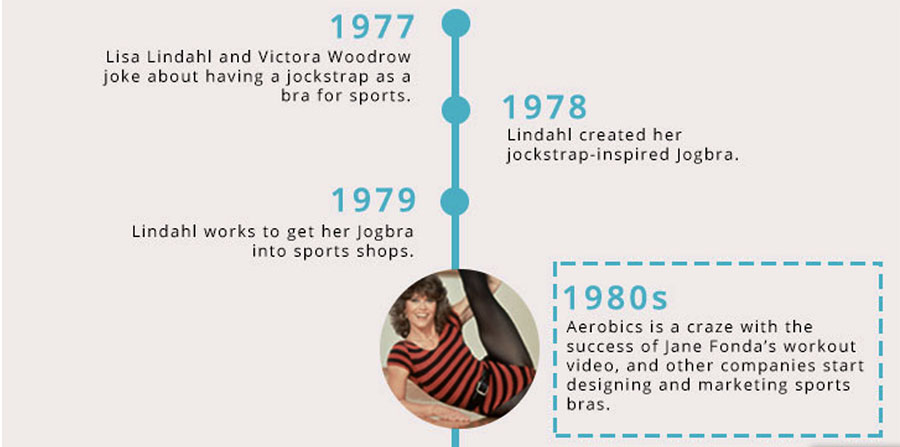
One day I walked into a hook + bullet store in Eastern Oregon selling aerobic shoes and jog bras. The guys looked at me and laughed, but they gave me an order because of the courage it took to walk in there. A year later, they were my biggest account.
There were so many retailers who were looking for product primarily for women runners. Oregon has a huge running community. Reebok then became a big account, and suddenly I was selling women’s product including Moving Comfort jog bras.
So there was an explosion in the market. Yes. At that time So there was an explosion in the market. Yes. At that time 52% of the total population, women, did not have access to sport, fitness and health the way men did. And women bought eight times as many shoes as men! It was such a gigantic opportunity and finally, everyone got on board but at the beginning, it was a tough battle. Economically, you couldn’t turn away from it. Women had the power—and to this day they certainly still do in footwear.
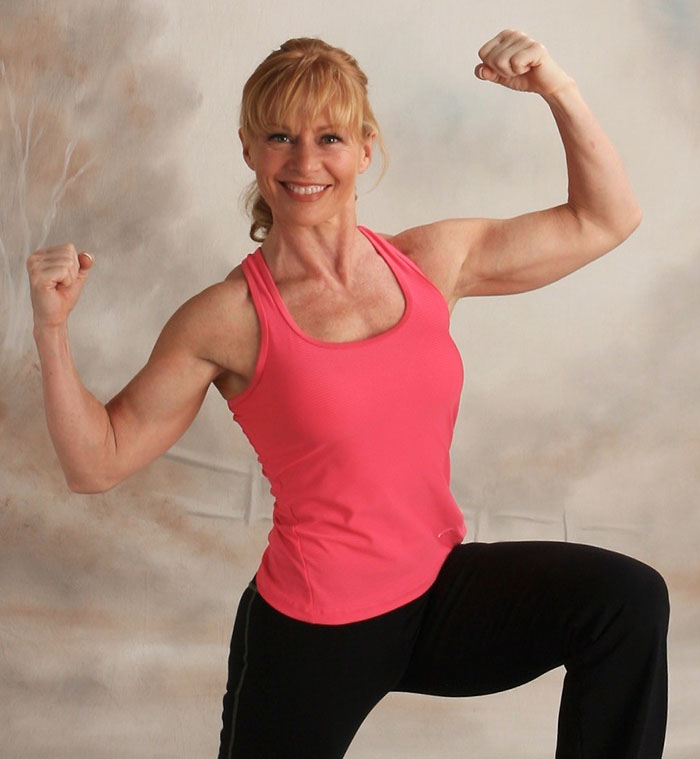
In a male-dominated industry, why did Reebok jump on board with Gin Miller and embrace the STEP? I was the decision-maker in the room. I had been selling shoes. I set up the Reebok Instructor Alliance. I had set up our relationship with AFTA and IDEA. I knew the industry that was emerging really well.
The STEP itself was one thing but the most important thing was Gin Miller, pictured right at 63-years young. She had an infectious energy and enthusiasm that would make the programming successful. I was looking for programming, and we invested in Gin. STEP would never get stale as long as Gin was in charge of what STEP was. And then she traveled around the world. STEP Reebok went worldwide and everyone and in every country, she went loved her. Everyone got the same response, got the same love from her. In the world of fitness, she was a rock star. And that’s what I saw.
Those are the kinds of things that go to an emotional state. People want to have fun. People want to be around positive high-energy people and it’s contagious. And Gin does that. She’s just one-of-a-kind. That’s what Reebok invested in. That’s what you couldn’t deny. And when I pulled Paul Fireman aside, the Chairman of Reebok at the time, I said ‘this is Gin Miller, here’s what we’re going to do’—he took just five minutes listening to Gin and seeing what she was doing and he said, ‘that’s incredible, let’s go.’
STEP Reebok was because of Gin. It would have been a very hard sell otherwise.
Back when I was running the program, Reebok was twenty years ahead of the times. Nike was creating a program about imitating men’s sports—the female version of men’s sports. What Reebok was doing was creating something new, bold and uniquely feminine—uniquely women’s. That’s now being acknowledged. It’s important.
Photos courtesy Angel Martinez, Reebok, Gin Miller. Video courtesy Reebok

